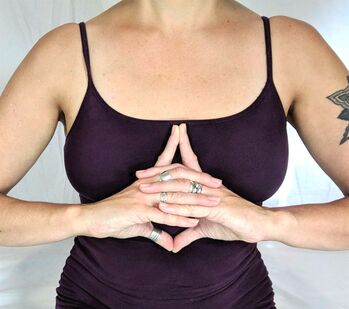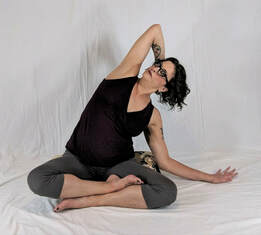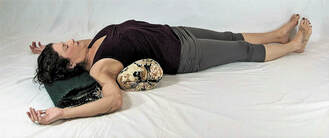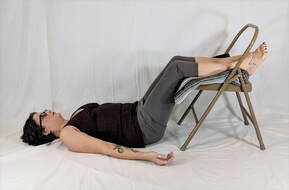|
This article also appeared in the Yoga U Online Wellness Blog, December 2018 For most people, a good night’s sleep will set us right when we experience occasional fatigue. Cancer-related fatigue is different and not completely understood by allopathic medicine. This deep tiredness is not alleviated by sleeping and is one of the most common, frustrating, and long-lasting side effects for many survivors. The fatigue may be caused by the cancer itself making the body’s processes less efficient and requiring more energy. Chemotherapy and radiation may kill cancer cells, but they also lead to a buildup of cell waste, and extra cellular energy is needed to repair damaged tissue. The pain, anxiety, loss of appetite, lack of exercise, insomnia and low blood counts caused by these treatments may also be contributing factors. Yoga for Cancer Related Fatigue Yoga offers powerful tools that help to relieve cancer-related fatigue such as asana (postures), mudra (hand gestures), pranayama (conscious breath), and relaxation. A recent literature review showed that yoga can improve quality of life by increasing both physical and mental energy. The yoga practice that follows is a combination of gently stimulating mudra, movement and pranayama, followed by a restorative inversion which provides a few moments of rest. Practice time of the day, all or in part. Yoga Practice Tips
 Stating Intention with Uttarabodhi Mudra Stating an intention, or sankalpa, is an important first step toward using yoga as a healing practice. Combined with a mudra that is stimulating to the immune system, it can serve as a reminder of your goals during this time.
 Seated Trio Cancer-related fatigue often creates such tiredness that movement of the body seems like a challenge. When we are sedentary, our energy becomes stagnant and prana cannot flow to the areas of the body where it is needed to keep us healthy. Movement is a simple way to allow both prana and lymph to flow. The lymphatic system is key to immunity and relies on the pumping of muscles to move lymph through the nodes and vessels. It is especially important for breast cancer patients to move the arms and upper chest; this trio of seated spinal movements moves prana and lymph into the armpit area and increases range of motion in the spine and shoulders. When moving the arms, it is important to only stretch to a comfortable degree, especially if there are surgery sites or ports in the chest. Alternate arm positions will be given so be sure to choose what is comfortable. Continue to follow the pace of your breath, it is a barometer of how you are feeling in each pose. If you find yourself holding the breath or feeling discomfort, try again a bit more gently. Seated Lateral Bend:
 Reclining Heart Opener A gentle backbend is helpful for increasing breath capacity as well as uplifting the mood as it enables deeper inhalations throughout the upper chest.
Anuloma Krama (3-Part Inhale) Practicing pranayama can have a profound effect on your energy levels and mood. Focusing on the inhalation tends to increase energy and lighten the mood. You can practice the three-part inhale from the reclined heart opener described above, or rest on the back with the knees bent and the feet on the floor.
 Legs in Chair Restorative yoga can complete a yoga practice or be done by itself on days when you are highly fatigued and need to reset the body and mind. This posture is a mild inversion that provides a change in your perspective to gravity and encourages deeper breathing, energy absorption and relaxation. Elevating the legs on the chair helps with fatigue in several ways. Besides allowing the body to be still for a few minutes, this pose allows the venous blood to flow back up the legs toward the heart where it is better circulated. This process sends signals to the parasympathetic nervous system to turn on the “relaxation response”. It does take some time for these internal processes to occur, so rest here for as long as you feel comfortable.
References
0 Comments
Leave a Reply. |
Index:Archives:
September 2022
I attend Cheryl's class regularly and feel that my practice has improved immensely over the past few years due to her expert coaching. Her teaching style is clear and compassionate and her previous experience in teaching adults is evident in her organized approach and easy to understand instructions. I also appreciate that Cheryl not only teaches us about how to correctly position ourselves, but also touches on many aspects of yoga philosophy, which in turn has deepened my personal practice and heightened my awareness of the connection between mind and body, breath and relaxation. |

 RSS Feed
RSS Feed
